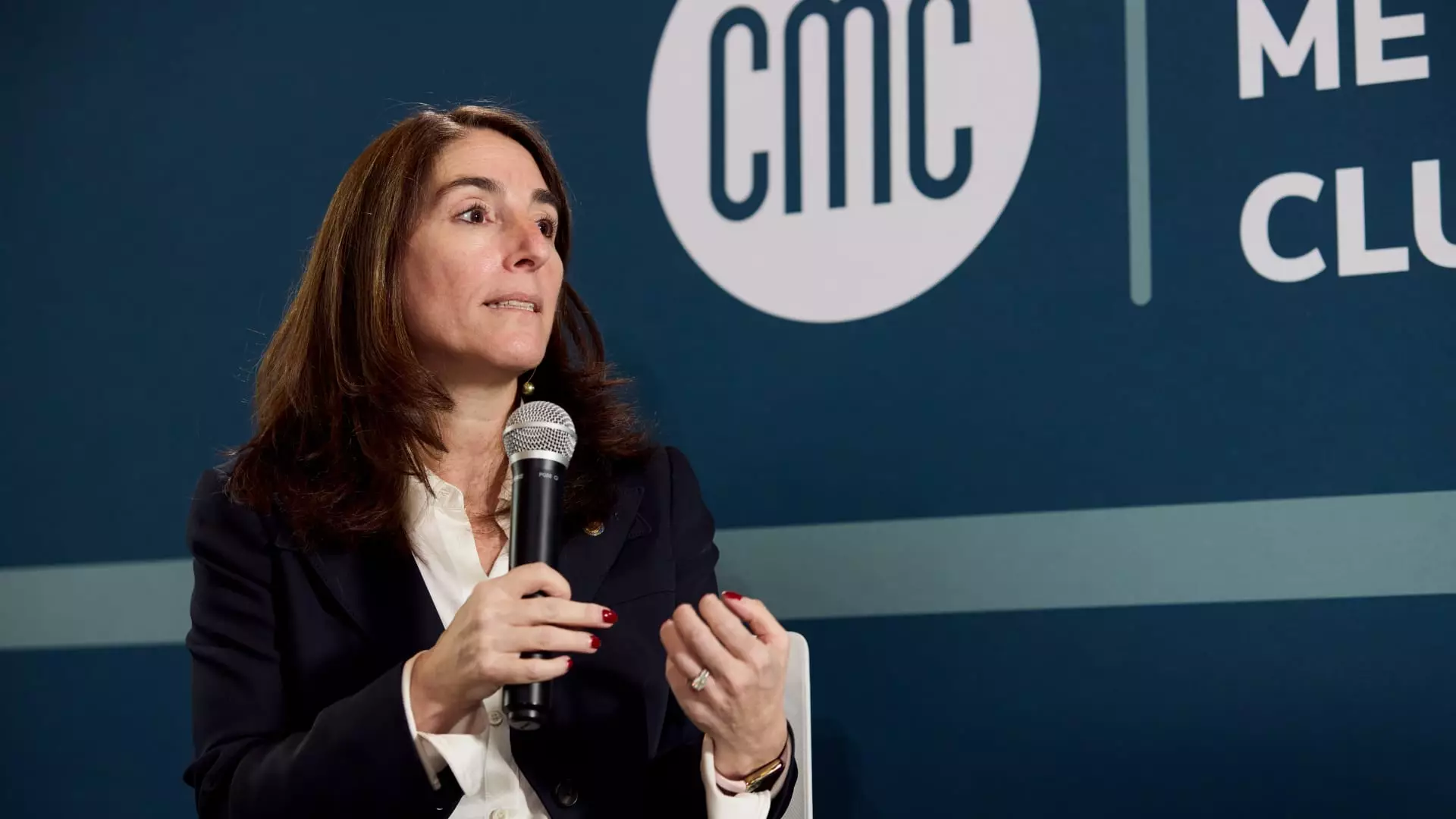In an era where economic conditions shift dramatically and unpredictably, Cleveland Federal Reserve President Beth Hammack has emerged as a strong advocate for patience in monetary policy. Speaking on CNBC’s “Squawk Box,” Hammack emphasized that policymakers should refrain from knee-jerk responses while assessing the impact of tariffs on inflation and growth. This idea of patience reflects a broader acknowledgment of the high levels of uncertainty affecting economic landscapes today—a sentiment echoed by many economic leaders.
As Hammack pointed out, moving too swiftly in response to fluctuating data can result in miscalibrated policies that may ultimately hinder economic recovery or growth. In her view, the current economic indicators paint a relatively decent picture. Soft data, particularly those derived from business surveys, signal concern among many firms, but she rightly argues that the “hard” economic data—like unemployment rates and inflation indices—remain robust. The challenge, then, rests not solely on deciphering the metrics but truly understanding their implications for real-world experiences.
Tariffs and Their Risky Implications
The central bank is currently grappling with the impacts of tariffs instituted under former President Donald Trump. These duties have not only raised concerns about inflation but have also sparked fears about their potential to dampen employment levels. Hammack raised valid points about how these conflicting objectives could complicate the Fed’s dual mandate, aiming for maximum employment while ensuring stable prices. The interplay between inflation and unemployment creates a delicate balancing act for policymakers.
If inflation continues to rise while unemployment falls, Hammack warns, the resulting pressure on the Fed becomes increasingly complex. This scenario poses significant risks for not only economic stability but also confidence in policy effectiveness. The sensitivity around this tariff-related uncertainty underscores the need for deliberation and data-driven decision-making rather than impulsive rate changes based on transient market fluctuations.
Market Sentiment and Real Economy Impacts
The uncertainty surrounding U.S. tariffs has undoubtedly contributed to volatility in the markets. Hammack, a seasoned former Goldman Sachs executive, acknowledges her sensitivity to market dynamics, albeit with a crucial distinction: the primary focus should remain on the broader economic conditions affecting households and businesses. She sees the role of the Federal Reserve as steering the real economy, rather than merely reacting to the whims of the stock market.
This is a vital perspective that resonates with the fundamental purposes of central banking. While markets are indeed a significant indicator of economic health, they are not the whole picture. As Hammack emphasized, the priority must lie in understanding how external factors, such as trade policy, influence everyday economic realities. The decisions that businesses make about hiring, investments, and future plans are all rooted in their perceptions of economic stability and growth potential.
Looking Ahead: Consideration, Caution, and Action
In the upcoming Federal Open Market Committee meetings, Hammack strongly suggests that the Fed’s decisions should be informed by convincing data rather than speculative forecasts. This emphasis on data-driven policy making reflects a growing consensus among economists that informed decision-making is crucial during times of uncertainty and volatility.
Moreover, Hammack’s insights remind us that patience is not merely passive waiting; it is an active commitment to analyzing and understanding the economic landscape before taking action. The Fed’s decisions reverberate across the economy, influencing everything from consumer spending to business investment. Therefore, every move must be carefully considered, understanding that a well-thought-out strategy may lead to more sustainable and long-term economic health.
As policymakers gear up for future meetings, the commitment to thoughtful deliberation and a careful assessment of economic data remains pivotal. Hammack has set a tone of caution and responsibility as she leads the Cleveland Fed, encouraging a culture of patience that may ultimately usher in a period of measured growth amid ongoing uncertainties.

